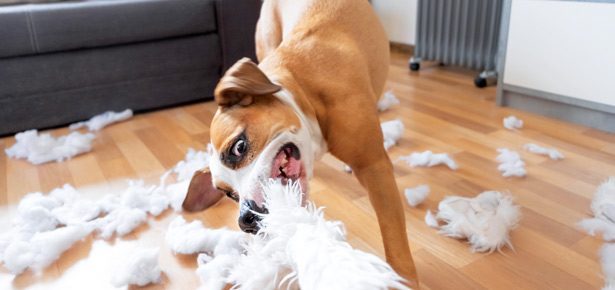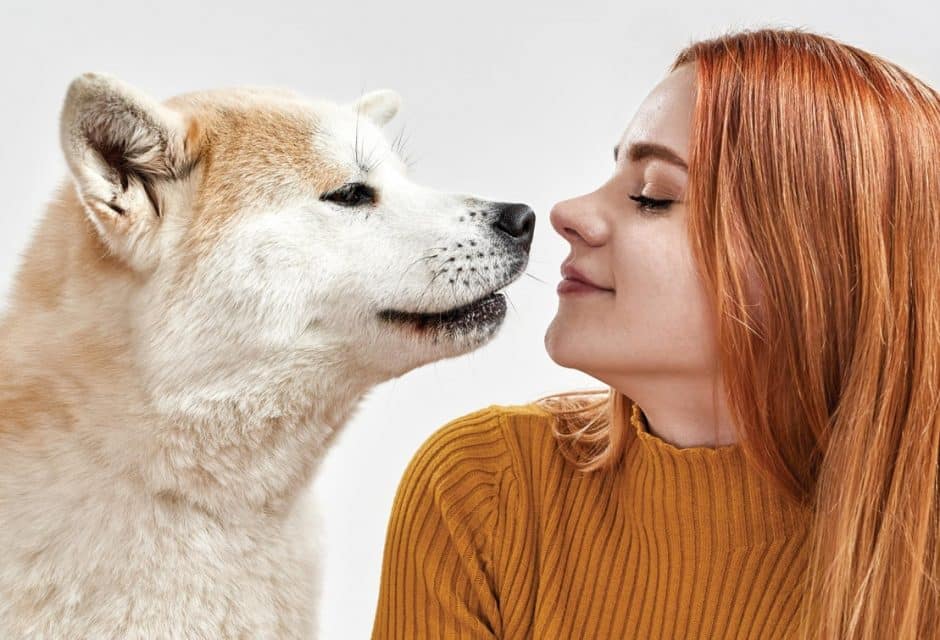

Terrible Teens! Has Your Dog’s Behaviour Changed?
Canine Changes During Adolescence
Dog Behavior Changes!
Q: I have two Labrador Retrievers puppies that are eight-month-old siblings. They’re wonderful and we love them very much, but in the last few months they seem to have gone from being well trained family members to being out of control wild dogs! What are we doing wrong? Is this behavior change normal?—Love Our Labs
A: Actually, you’ve just described fairly normal dog behaviour for eight-month-old Labradors, and many other breeds as well! At eight months of age, your dogs are passing out of their puppy phase and entering the dreaded time known as adolescence. Or, as I sometimes think of it, “bratolesence.” This is the time when, just like human teenagers, dogs often develop selective hearing and begin to push their boundaries. Even if your dogs were well trained previously, they may now seem to have forgotten everything you’ve taught them, and may stop responding reliably to your requests. On top of that, if you have a very energetic breed like a Lab, naughty behaviours such as jumping up, pulling on lead, and running off are performed with extra vigor, resulting in, as you described it, out of control wild dogs!
So what are you to do when your dog's behvavior changes? For starters, realize that this is normal behaviour and there is nothing wrong with your dogs. Chances are you haven’t done anything wrong, either. However, it is important now to double down on their training. If necessary, go back to basics. For example, start the recall in the house when there are no distractions, moving on to adding small distractions and eventually larger ones. An example of a small distraction would be calling a dog while he’s sniffing the ground in the living room. A medium distraction might be a family member (who has been in the house all along) walking into the room. A high-level distraction might be a child running through the room, or your dog being indoors but noticing something exciting in your back yard. Once your dogs are successful indoors, practice outdoors, building from no distractions to large ones as you did indoors. Practice in short sessions a few times daily. Also, during the training stage, don’t call your dogs using that special recall word unless you’re sure they’ll come; otherwise you’re just undoing all that good work. If you need them to come, until they’re fully trained, use another word or phrase, or just go get them.
Adolescents are not known for their frustration tolerance or self-control, so this is also the time to help them relearn it or, if starting from scratch, to master these skills. One easy way to do so is to ask your dogs to earn things in daily life. For example, before you put their food bowls down, ask them to sit. As long as they remain seated, the bowl should continue to move toward the floor. If they stand or move toward the bowl, whoops! You stand back up. Believe me, they’ll learn very quickly to control themselves to get what they want. You can also employ the sit-to-get-what-you-want strategy when it comes to things like the front door opening for a walk, or whatever your dogs find valuable. If they know other skills like lying down on cue, you can incorporate those as well.
“At eight months of age, your dogs are passing out of their puppy phase and entering the dreaded time known as adolescence.”
Another way to train self-control is through play. For this exercise, your dog must understand the “Leave it” cue. Assuming your dogs enjoy play tug, try this: Hold both ends of the tug rope so that your dog grabs it in the middle. Begin playing, but don’t get too carried away. Then, freeze in place so that the tug rope is absolutely immobile. Your dog will probably keep trying to tug; that’s okay. Say, “Leave it.” Wait. Most dogs, if they have been taught Leave It, will move away from the rope and many will even seat themselves. Even if they’ve not completely mastered the skill, you will have become such a boring play partner that chances are they will stop anyway. Great! Wait a moment more and then say, “Take it!” and present your dog with the toy. The game is back on! Your dog has complied with your request, and has been rewarded with the continuation of the game.
I realize this is a challenging time, especially when you have two teenagers to contend with; but hang in there. It does get easier, especially if you are diligent about reinforcing training and self-control. Soon you will have young adult dogs and then full adults who once again respond well to your requests and behave less like wild dogs and more like the dog behavior you remember so well.
———
» Nicole Wilde is the award-winning author of 11 books on canine behaviour. You can find her books, seminar DVDs and blog, as well as sign up for free Training Tip Tuesdays, at nicolewilde.com.
Join the newsletter and never miss out on dog content again!
"*" indicates required fields
By clicking the arrow, you agree to our web Terms of Use and Privacy & Cookie Policy. Easy unsubscribe links are provided in every email.





